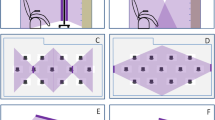Abstract
An increasing number of healthcare-associated infections indicates a need to search for the ideal disinfection method. The high biocidal efficacy of the most common disinfection method, UV-C radiation, has been confirmed in laboratory conditions; however, the real biocidal has not been determined yet. UV-C radiation's effectiveness on surface disinfection was evaluated at different distances of bacterial samples (Escherichia coli) from UV-C lamps and exposure times of radiation. The results of microbiological tests were presented as changes in the colony-forming unit (CFU/mL) and average colony size (mean) under monitoring the radiation dose emitted by the radiation source.
The highest percentage reduction of the CFU/mL (83%) was measured at a distance of 10 cm from the UV-C lamp (2 x 36 W253.7 nm), exposed to radiation for one hour. The UV-C radiation is ineffective at a distance higher than one meter on a porous surface, indicating a need for further studies on modifying this method.
Access this chapter
Tax calculation will be finalised at checkout
Purchases are for personal use only
Similar content being viewed by others
References
Abdollahi, M., Hosseini, A.: Hydrogen Peroxide. Encyclopedia of Toxicology, pp. 967–970. Academic Press (2014). https://doi.org/10.1016/b978-0-12-386454-3.00736-3
Arkusz, K., Pasik, K., Halinski, A., Halinski, A.: Surface analysis of ureteral stent before and after implantation in the bodies of child patients. Urolithiasis 49(1), 83–92 (2021). https://doi.org/10.1007/s00240-020-01211-9
Arrage, A.A., Phelps, T.J., Benoit, R.E., Palumbo, A.V., White, D.C.: Bacterial sensitivity to UV light as a model for ionizing radiation resistance. J. Microbiol. Methodss. 18, 127–136 (1993)
Białoszewski, D., Bocian, E., Tyski, S.: Ozonoterapia oraz zastosowanie ozonu w dezynfekcji. Post. Mikrobiol. 51(3), 177–184 (2012)
Boyce, J.M., Farrel, P.A., Towle, D., Fekieta, R., Aniskiewicz, M.: Impact of room location on UV-C irradiance and UV-C dosage and antimicrobial effect delivered by a mobile UV-C light device. Infect. Control Hosp. Epidemiol. 37(6), 667–672 (2016). https://doi.org/10.1017/ice.2016.35
Bucheli-Witschel, M., Bassin, C., Egli, T.: UV-C inactivation in Escherichia coli is affected by growth conditions preceding irradiation, in particular by the specific growth rate. J. Appl. Microbiol. 109, 1733–1744 (2010). https://doi.org/10.1111/j.1365-2672.2010.04802.x
Chen, H., Rui, D., Ren, W., Zhang, S., Pengrui, D., Zhang, Y.: The microbial activity in PM2.5 in indoor air: as an index of air quality level. Aerosol Air Quality Res. 21(2), 200101 (2021). https://doi.org/10.4209/aaqr.2020.03.0101
Cheng, Y., et al.: Inactivation of Listeria and E. coli by Deep-UV LED: effect of substrate conditions on inactivation kinetics. Sci. Rep. 10, 3411 (2020)
Einarsson, E., Svärd, S.G., Troell, K.: UV irradiation responses in Giardia intestinalis. Parasitol. 154, 25–32 (2015). https://doi.org/10.1016/j.exppara.2015.03.024
Flemming, H.C., Wuertz, S.: Bacteria and archaea on Earth and their abundance in biofilms. Nat. Rev. Microbiol. 17, 247–260 (2019). https://doi.org/10.1038/s41579-019-0158-9
Illuminating Engineering Society Committee Report: IES CR-2–20-V1
Klevens, R.M., et al.: Estimating health care-associated infections and deaths in US hospitals, 2002. Public Health Rep. 122, 160–166 (2007). https://doi.org/10.1177/003335490712200205
Łada-Tondyra, E., Jakubas, A.: Porównanie systemów tekstronicznych ograniczających rozwój Bakterii. Przegl¡d elektrotechniczny 96(2) (2020)
Nagarjuna, D., Mittal, G., Dhanda, R.S., Verma, P.K., Gaind, R., Yadav, M.: Faecal Escherichia coli isolates show potential to cause endogenous infection in patients admitted to the ICU in a tertiary care hospital. New Microbes New Infect. 7, 57–66 (2015). https://doi.org/10.1016/j.nmni.2015.05.006
Nycz, M., Paradowska, E., Arkusz, K., Kudlinski, B., Krasicka-Cydzik, E.: Surface analysis of long-term hemodialysis catheters made of carbothane (poly(carbonate)urethane) before and after implantation in the patients’ bodies. Acta Bioeng. Biomech. 20(2), 47–53 (2018). https://doi.org/10.5277/ABB-01075-2017-02
Ozer, N.P., Demirci, A.: Inactivation of Escherichia coli O157:H7 and Listeria monocytogenes inoculated on raw salmon fillets by pulsed UV-light treatment. Int. J. Food Sci. 41(4), 354–360 (2006). https://doi.org/10.1111/j.1365-2621.2005.01071.x
Patra, V., Byrne, S.N., Wolf, P.: The Skin Microbiome: is it affected by UV-induced immune suppression? Front. Microbiol. 7 (2016). https://doi.org/10.3389/fmicb.2016.01235
Sikora, A., Zahra, F.: Nosocomial Infections. In: StatPearls [Internet]. Treasure Island (FL): StatPearls Publishing (2022). PMID: 32644738
Singh, H., Bhardwaj, S.K., Khatri, M., Kim, K.-H., Bhardwaj, N.: UV-C radiation for food safety: an emerging technology for the microbial disinfection of food products. Chem. Eng. J. 417, 128084 (2021). https://doi.org/10.1016/j.cej.2020.128084
Sokół-Leszczyńska, B., Sztark, E., Leszczyński, P., Młynarczyk, G., Wróblewska, M.: Przygotowanie instrumentarium medycznego do zabiegów chirurgicznych. Część II – sterylizacja i reprocesowanie. Post. Mikrobiol 51(4), 315–321 (2012)
Vermeulen, N., Keeler, W.J., Nandakumar, K., Leung, K.T.: The bactericidal effect of ultraviolet and visible light on Escherichia coli. Biotechnol. Bioeng. 99(3), 550–556 (2007). https://doi.org/10.1002/bit.21611
Walker, C., Ko, G.: Effect of ultraviolet germicidal irradiation on viral aerosols. Environ. Sci. Technol. 41, 5460–5465 (2007). https://doi.org/10.1021/es070056u
Wlazlo, L., Drabik, K., Al-Shammari, K.I.A., Batkowska, J., Nowakowicz-Debek, B., Gryzińska, M.: Use of reactive oxygen species (ozone, hydrogen peroxide) for disinfection of hatching eggs. Poult. Sci. (2020). https://doi.org/10.1016/j.psj.2019.12.039
Zeng, F., et al.: Inactivation of chlorine-resistant bacterial spores in drinking water using UV irradiation, UV/Hydrogen peroxide and UV/Peroxymonosulfate: efficiency and mechanism. J. Clean. Prod. 243, 118666 (2020). https://doi.org/10.1016/j.jclepro.2019.118666
Zielnik-Jurkiewicz B., Rakowska-Szkudlarek M.: Zakażenia patogenami alarmowymi na Oddziale Otolaryngologicznym Szpitala Dziecięcego im. prof. dr. med. Jana Bogdanowicza w latach 2005–2008. Otolaryngol Pol. 63(6), 513–519 (2009). https://doi.org/10.1016/s0030-6657(09)70171-4
Acknowledgement
This work was founded by Polish National Centre for Research and Development, "Using UV-C technology to reduce transmission SARS-CoV-2 virus and reduction the transmission of infections in hospitals", SZPITALE-JEDNOIMIENNE/57/2020 realized in years 2021–2022.
Author information
Authors and Affiliations
Corresponding author
Editor information
Editors and Affiliations
Rights and permissions
Copyright information
© 2024 The Author(s), under exclusive license to Springer Nature Switzerland AG
About this chapter
Cite this chapter
Pasik, K., Arkusz, K., Klekiel, T., Woźniak, W., Stryjski, R. (2024). Evaluating the Effectiveness of Ultraviolet-C Lamps for Reducing Escherichia Coli: Distance and Exposure Time. In: Gzik, M., Paszenda, Z., Piętka, E., Tkacz, E., Milewski, K., Jurkojć, J. (eds) Innovations in Biomedical Engineering 2023. Lecture Notes in Networks and Systems, vol 875. Springer, Cham. https://doi.org/10.1007/978-3-031-52382-3_24
Download citation
DOI: https://doi.org/10.1007/978-3-031-52382-3_24
Published:
Publisher Name: Springer, Cham
Print ISBN: 978-3-031-52381-6
Online ISBN: 978-3-031-52382-3
eBook Packages: Intelligent Technologies and RoboticsIntelligent Technologies and Robotics (R0)




